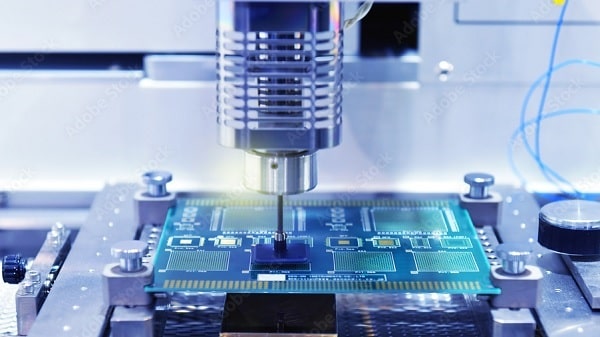How to choose a PCB Assembly Manufacturer?

Introduction
Selecting the right contract manufacturer for printed circuit board (PCB) assembly is a crucial decision that impacts cost, quality, and the success of bringing your electronics product to market. With so many options to choose from, narrowing down the list and vetting potential partners takes research and careful due diligence.
This article provides guidance on the major factors to consider when evaluating contract manufacturers like Rayming for your PCB assembly work.
Key Criteria for Selecting a PCB Assembly Partner
Capabilities and Offerings
- Services – Assembly, test, box build, supply chain management, new product introduction
- Technologies – SMT, through-hole, mixed, advanced assembly
- Production volumes – Prototypes, low, medium, high volume capabilities
- Process expertise – Standard assembly vs specialized processes
- Materials handled – FR4, flex, rigid-flex, metal core PCBs, etc.
- Component types – 0201 discretes, BGAs, connectors, etc.
- Value-add – Design, test development, logistics services
Choose a partner aligned with your needs.
Industry Experience
- Domain expertise – Experience in your product vertical
- Technology experience – Specific skills in applicable processes
- Engineering depth – Resources for design, test, troubleshooting issues
- Obsolescence management – Handling EOL components and re-spins
- Quality focus – Industry certifications, rigorous processes
- Proactive – Engages early around DFM, optimization
- Client list – Reputable customers voucher for their work
Look for demonstrated expertise versus generalists.
Quality and Reliability
- Defect rates – Process capability monitoring and continuous improvement
- Corrective actions – Disciplined problem resolution
- Process control – Statistical process control and stability
- IPC standards – Adoption of latest applicable IPC standards
- Traceability – Component and board-level traceability
- ESD control – Robust ESD handling procedures
- Inspection – Comprehensive inspection regimens at multiple stages
- Equipment maintenance – Preventative programs to maximize uptime
Verify attention to quality backed by data.
Program Management
- Project management – Dedicated program managers guide projects
- Change management – Structured ECN/ECO change implementation
- Communication – Alerts on risks, open issues, deviations
- Continuous improvement – Cost reduction and process refinement practices
- Joint milestones – Align on schedule commitments
- Issue escalation – Clear steps for raising concerns
- Progress reporting – Consistent metrics demonstrate performance
There should be rigor and visibility across the program lifecycle.
Location and Logistics
- Regions supported – Local facilities preferred for collaboration access
- Supply chain – Ability to procure components reliably
- Customs expertise – Streamlined trade compliance
- Continuity of supply – Multiple production sites for risk mitigation
- Proximity – Distance impacts communication, response times, and shipping
- Distribution – Integrated distribution capabilities
- Inventory – Consigned local inventory improves flexibility
Minimize logistics delays that can disrupt projects.
Vetting and Qualifying Contract Manufacturers
Once you have a shortlist of potential PCB assembly partners, conduct thorough due diligence:
- Site visits – Tour facilities to view firsthand. Assess culture.
- Qualification builds – Run test assemblies to prove out capabilities.
- Quality audits – Review procedures, standards, certifications.
- Project reviews – Interview teams supporting projects.
- Reference checks – Speak to current customers on performance.
- Credit checks – Verify financial stability.
- Price benchmarking – Do head-to-head price comparisons.
- SLA commitments – Formalize service level agreements.
- IP protection – Ensure non-disclosure agreements in place.
Take the time to properly evaluate partners before selecting.
Key Performance Metrics to Track
Once a PCB contract manufacture is selected, consistently measure:
- On-time delivery – Verify schedule performance
- Yields – First pass yields by product
- PPM defect rates – Robust process capability
- DPPM defects – Outgoing defects reaching customer
- Cycle times – Efficiency benchmarking
- Scrap rate – Waste tracking
- Cost reduction – Ongoing savings from initiatives
- Inventory turns – How quickly inventory moves
- Time to full rate production – How long to ramp products
Continuously monitoring these KPIs ensures the relationship stays on track.
Conclusion
Choosing the right contract manufacturer for PCB assembly requires in-depth diligence across a range of technical, quality, commercial, and program management factors. Take the time to thoroughly evaluate prospective partners against your criteria. Once selected, maintain transparency through open communication and tracking key metrics. The ideal contract manufacturer becomes an extension of your team. With the above approach, you can identify the right partner to execute PCB assembly for your products reliably and cost-effectively.
Frequently Asked Questions
What are warning signs of an unreliable PCB assembly partner?
Watch for these red flags:
- High turnover of account management staff
- Difficulty contacting or delayed responses
- Frequent excuses for misses or quality issues
- Reluctance to share detailed metrics
- Lack of process documentation
- Underinvestment in capabilities or equipment
- Charging for non-recurring engineering repeatedly
- Excessive expedite fees for normal builds
- Inability to drive continuous cost reduction
What is the role of program management for PCB assembly?
The program management role includes:
- Leading cross-functional teams executing projects
- Coordinating internal resources and external partners
- Monitoring schedules, risks, issues, and action items
- Managing change implementation
- Collection and communication of key metrics
- Serving as a conduit between customer and factory
- Resolving project problems and escalations
- Driving process improvements across programs
What steps ensure a smooth transition to a new PCB assembly partner?
Best practices for transitioning include:
- Developing qualification test plans
- Conducting process audits
- Checking quality certifications
- Validating IT infrastructure security
- Reviewing program management practices
- Running initial pilot builds
- Handling logistics setup for BOM supply
- Establishing KPI reporting
- Aligning on escalation processes
- Meeting key account team members
- Signing required legal agreements
How can assembly costs be optimized with contract manufacturers?
Ways to drive lower costs include:
- Design for manufacturing guidance during development
- Leveraging preferred component pricing
- Validating alternate component substitutions
- Utilizing excess capacity at non-peak times
- Extending payment terms for better cash flow
- Negotiating volume-based price breaks
- Standardizing processes to improve productivity
- Shifting testing to the supplier where cheaper
- Applying continuous improvement initiatives
What are the pros and cons of using multiple PCB assembly partners?
Potential pros:
- Diversifying risk across suppliers
- Pitting suppliers against each other to get best pricing
- Expanding capacity during demand peaks
- Supporting separate business units or product lines
Potential cons:
- Added complexity managing multiple partners
- Difficulty comparing performance
- Less leverage negotiating pricing with divided spend
- Harder to drive standardized processes
- Less focused continuous improvement effort
